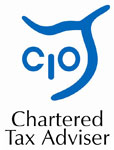Find out how the accounting treatment of investment properties held by individuals has changed.
Individuals who hold investment properties and receive rental income need to disclose the rental income on their tax returns. Until 5 April 2013 this had to be done using the accruals basis; however; from 6 April 2013 an individual with rental income of less than £79,000 can choose to use the cash basis instead which may be simpler. As they do not need to produce a balance sheet the question of whether to account for the investment properties at cost or market value does not apply.
Businesses can enter the cash basis if their receipts for the year are less than the amount of the VAT threshold (£79,000 from 1 April 2013). Businesses must leave the cash basis after their receipts exceed twice the amount of the VAT registration threshold (£158,000 from 1 April 2013). It works on a cash flow basis. For income, it’s what the business receives, when it is received. For example, if an agent collects the rent then makes payments to the landlord net of commissions, expenses and VAT, the landlord’s cash receipts figure for these purposes will be the net cash received from the agent after subtracting these deductions.
The wear and tear allowance of 10% of the ‘net rent’ can be claimed by both individuals and companies if they let out furnished residential property.
In most cases, individuals will hold the investment properties as mortgages are usually required to purchase the properties and these are often easier to obtain in an individual’s name rather than by a company. HMRC has a Property Rental Toolkit which is a helpful guide to the tax issues relating to rental properties.
Contact David Crossley
- 102/104 Widnes Road, Widnes, Cheshire, WA8 6AX
- 0151 420 6666
- david@hollandandcompany.co.uk
- Find us on map
- Contact Form
Recent Blog Entries
- 27 Oct 2022Mini-Budget u turn” We are living in one of the strangest periods in history where the Government introduces a n...
- 16 Mar 2022Tax when you sell propertyYou may be liable to pay Capital Gains Tax if you make a profit (‘gain’) when you sell (or...
- 10 Jan 2017Good excuse for being late submitting your tax return ?With the 31 January tax return deadline just around the corner, HMRC has revealed the ‘Top 10 oddest...
Twitter Feed

David K Crossley CTA, ATT
Member of the Chartered Institute of Taxation
